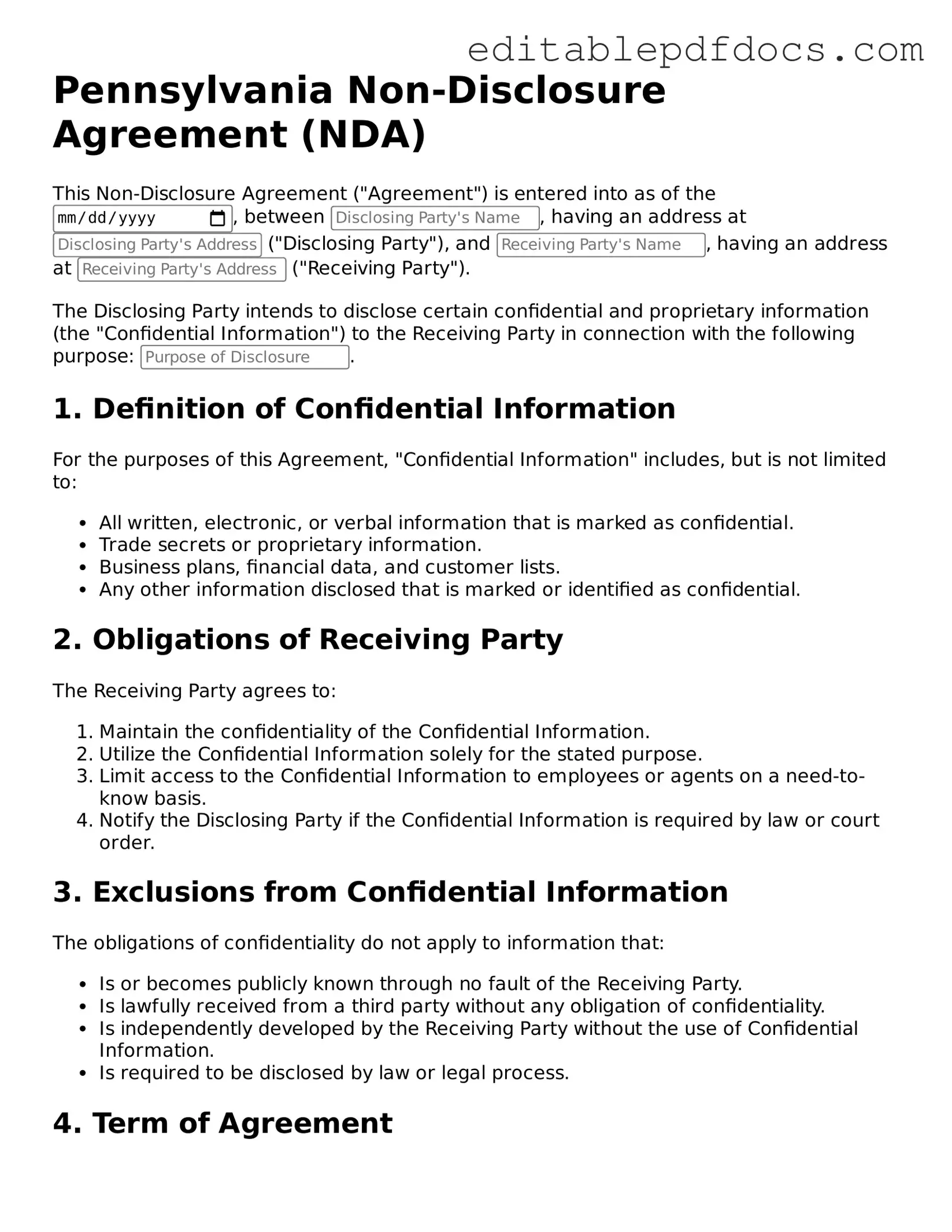When filling out the Pennsylvania Non-disclosure Agreement (NDA) form, individuals often overlook critical details that can lead to complications. One common mistake is failing to clearly define the confidential information. Without a precise description, the agreement may become ambiguous, leaving room for misinterpretation.
Another frequent error is neglecting to include the effective date of the agreement. This date is essential as it establishes when the terms of confidentiality begin. Without it, parties may find themselves in disputes about when the obligations started.
People sometimes forget to specify the duration of the confidentiality obligations. An NDA should clearly state how long the information must remain confidential. If this is not addressed, it can lead to uncertainty and potential breaches of trust.
Additionally, failing to identify the parties involved can create confusion. The NDA should explicitly name all individuals or entities bound by the agreement. Omitting this information can result in enforceability issues down the line.
Another mistake involves not including the governing law clause. This clause indicates which state’s laws will apply in case of a dispute. Without it, parties may face challenges in resolving legal issues that arise from the agreement.
People may also overlook the importance of including a clause for the return or destruction of confidential information after the agreement ends. This ensures that sensitive information is handled properly and reduces the risk of unauthorized disclosure.
Moreover, some individuals fail to have the NDA signed by all relevant parties. An unsigned agreement may not hold up in court, rendering it ineffective. It is crucial to ensure that every party involved has acknowledged and accepted the terms.
Another common oversight is not keeping a copy of the signed NDA. This document serves as proof of the agreement and should be stored securely. Without a copy, parties may struggle to enforce their rights if a breach occurs.
Lastly, individuals may underestimate the importance of legal review. While it may seem unnecessary, having a legal professional examine the NDA can help identify potential pitfalls and ensure that the document meets all necessary legal standards.
